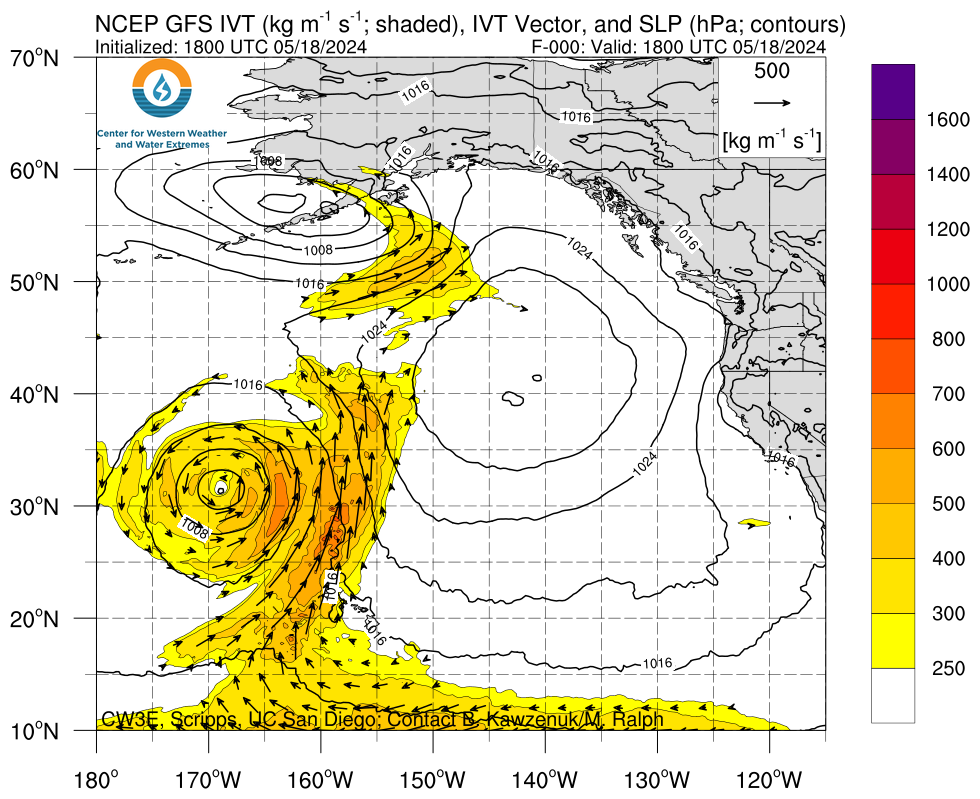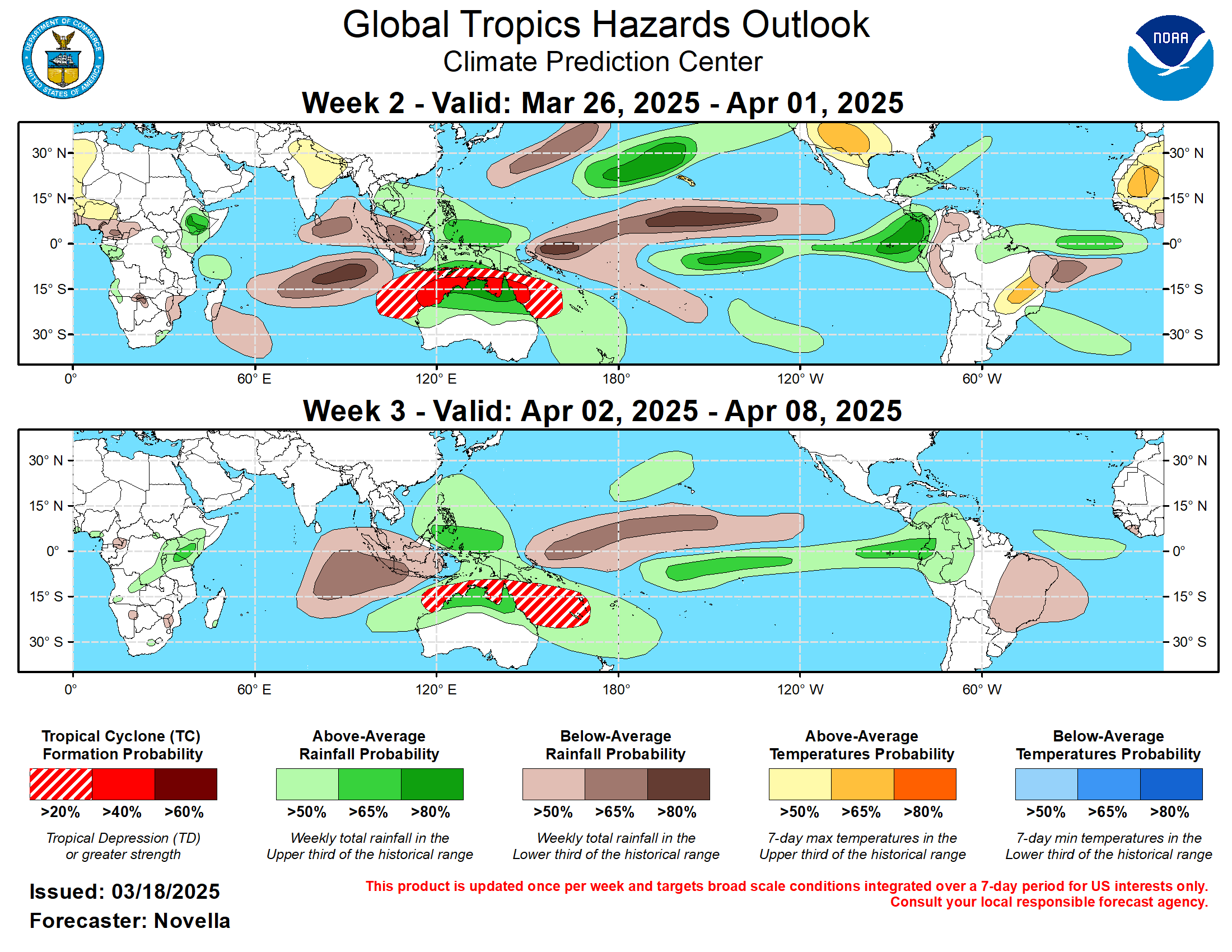This article focuses on what we are paying attention to in the next 48 to 72 hours. The article also includes weather maps for longer-term U.S. outlooks and a six-day World weather outlook which can be very useful for travelers.
First the NWS Short Range Forecast. The afternoon NWS text update can be found here after about 4 p.m. New York time but it is unlikely to have changed very much from the morning update. The images in this article automatically update.
Short Range Forecast Discussion
NWS Weather Prediction Center College Park MD
Thu Aug 01 2024
Valid 12Z Thu Aug 01 2024 – 12Z Sat Aug 03 2024…Dangerous heat engulfs much of the country as one heatwave continues
from the Southern Plains to the Southeast/Mid-Atlantic and another begins
in the West……Severe weather and flash flooding expected for portions of the Midwest
Thursday…… Locally heavy monsoonal shower and thunderstorm chances continue for
the Southwest…Widespread, dangerous heat will unfortunately be the main weather story
for much of the country this week as one heatwave continues for the
Plains, Middle/Lower Mississippi Valley, Southeast, and Mid-Atlantic, and
another heatwave begins over portions of the West. A strong upper-level
ridge will remain in place over the southern-tier of the U.S. the next
couple days, allowing for high temperatures to reach into the low 100s
over portions of the Southern Plains/High Plains, the upper 90s to low
100s for the Lower Mississippi Valley, and the upper 90s for the Southeast
into the southern Mid-Atlantic. High humidity values for areas east of the
High Plains will bring heat indices into the 105 to 110 degree range,
potentially as high as 115 for parts of the Lower Mississippi Valley, with
many areas under heat-related advisories or warnings. The combination of
hot temperatures/high heat indices, as well as very warm morning lows only
dropping into the mid- to upper 70s, will be dangerous to anyone without
access to adequate air conditioning. Temperatures warming into the upper
80s/low 90s with periods of higher humidity will lead to some muggy,
potentially dangerous conditions for portions of New England as well,
particularly on Friday. An approaching cold front will bring relief to
northern portions of the Southern Plains and Middle Mississippi Valley on
Friday, with the expectation the heat wave will begin to wane for most
locations through the weekend.In the West, an upper-level ridge will also begin to build northward,
sending high temperatures across much of the northern tier of the West
10-20 degrees above mid-Summer averages. Forecast highs Thursday are into
the upper 90s/low 100s for the inland Pacific Northwest/northern Great
Basin and mid- to upper 90s for the northern Rockies/High Plains.
Temperatures will get even hotter on Friday, with highs into the low to
mid-100s for most locations. Many near record-tying/breaking highs are
possible. Similar to areas further east, many heat-related advisories and
warnings have been issued as this heat will also reach dangerous levels
for the general public. Smoke from area wildfires will also continue to
plague parts of the region, resulting in hazy conditions and poor air
quality, and the risk for more wildfires will increase as the hot, dry
conditions settle in.An upper-level low/accompanying surface frontal system traversing the
northern side of the ridge over the southern tier of the U.S. will bring
another round of showers and thunderstorms to the Midwest Thursday. High
surface moisture leading to very strong instability will support intense
thunderstorm development through the afternoon across the warm sector
ahead of an approaching cold front, with lingering outflow boundaries from
overnight convection helping to trigger individual and clusters of storms.
Sufficient shear with the passing upper-level wave will lead to the threat
of severe weather, with a Slight Risk (level 2/5) from the Storm
Prediction Center covering Illinois, Indiana, Kentucky, and southwestern
Ohio, mainly for the threat of some damaging winds. The threat for some
intense downpours given the high moisture/strong storms, and potential for
some more widespread, organized clusters of storms, will lead to some
heavier rainfall totals and the risk for flash flooding. Many of these
locations have seen recent heavy rainfall given repeated rounds of
organized storms passing through, leading to wetter antecedent conditions
more sensitive to any additional rainfall. A Slight Risk of Excessive
Rainfall (level 2/4) covers much of same region from northeastern Illinois
southeast through Indiana/western Ohio and into eastern Kentucky. Some
slow moving storms producing heavy rainfall under the passing upper-low
may also lead to some flash flooding, with the Slight Risk extending
northwest into southern Wisconsin. Some more isolated storms will be
possible further east into the Appalachians and Mid-Atlantic Thursday.
Additional storms will be possible across the region Friday as the system
shifts eastward, with a greater chance of storms spreading into the
Appalachians and the Mid-Atlantic. Some isolated severe storms and
instances of flash flooding will be possible. A lingering upper-level
weakness will lead to scattered showers and thunderstorms over Florida and
portions of the Southeast Thursday, with moderate to locally heavy
rainfall possible, especially over the Florida Peninsula. More widely
scattered storms will remain possible Friday.Persistent Monsoonal conditions over the Southwest will continue to bring
daily shower and thunderstorm chances. Sufficient moisture across the
region will lead to the threat for some locally heavy downpours and an
isolated flash flooding, particularly over terrain sensitive areas such as
burn scars. A lingering frontal boundary will lead to some storms over
portions of the southern High Plains as well on Thursday, and a subtle
upper-level wave along the edge of the upper-ridging will bring storm
chances northwestward into portions of California Friday, particularly in
vicinity of the Sierra Nevada. Similar to areas further north, forecast
high temperatures more broadly in the region will be trending hotter and
above average, with 90s and low 100s for most locations outside of the
California Coast, and mid-100s to low 110s for the Desert Southwest.
To get your local forecast plus active alerts and warnings click HERE and enter your city, state or zip code.
Learn about wave patterns HERE.
Then, looking at the world and of course, the U.S. shows here also. Today we are looking at precipitation.
Please click on “Read More” below to access the full Daily Report issued today.
| Notices: What would you like to learn about? Please provide that to me via the comment section at the end of the article. |
Now more detail on the 48-Hour Forecast (It is a 48 to 72 Hour Forecast actually)
Daily weather maps. The Day 1 map updates twice a day and the Day 2 and 3 maps update only once a day. These maps update automatically. But if that does not happen, you can get updates by clicking HERE
TODAY (or late in the day the evening/overnight map will appear) (Key to surface fronts shown on maps and you will then also be able to insert a city name or zip code and get a local NWS forecast).
TOMORROW
NEXT DAY
We have a new animation of the forecast which shows how things may play out over the next 60 hours. To update click ANIMATION. Doing so will get you to the dashboard. You can then step through the animation or hit LOOP on the upper right of the display. You will have to hit the back arrow ← at the top left on your computer to get back into this article. It is a little more trouble than before but I think NOAA scrapped the animation routine I was using so we have to keep up with “progress”.
The NWS Climate Prediction Center’s: Watches, Warnings, and Advisories plus other information can be found HERE. That takes you to the NWC Severe Weather Site. From there you can select among many categories of information. Remember to hit the back arrow ← at the top left of your screen to return to this article.
ATMOSPHERIC RIVERS
This tells us what is approaching the West Coast. Click HERE to update If I have not gotten around to doing the update. Here is some useful information about Atmospheric Rivers.
Below is the current five-day cumulative forecast of precipitation (Updates can be found HERE)
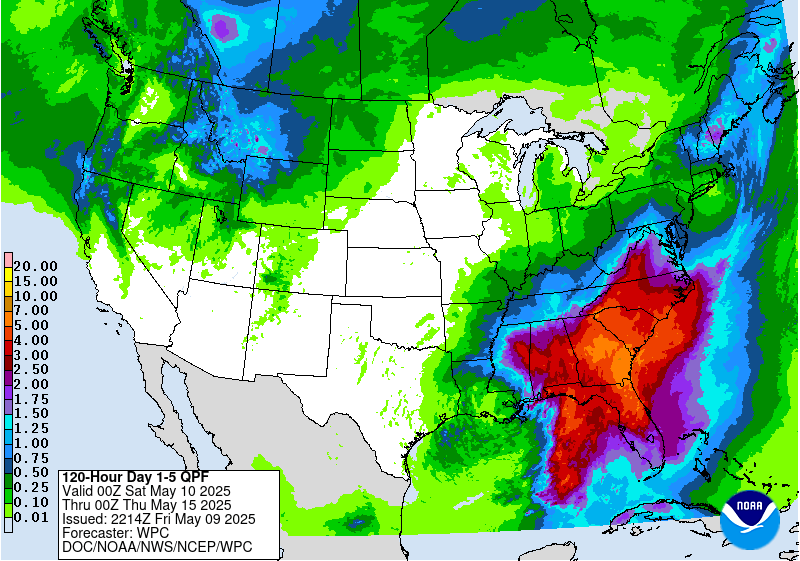
Ski SnowReports will Resume in the Fall.
Now we look at Intermediate-Term “Outlook” maps for three time periods. Days 6 – 10, Days 8 – 14, and Weeks 3 and 4. An outlook differs from a forecast based on how NOAA uses these terms in that an “outlook” presents information as deviation from normal and the likelihood of these deviations.
Below are the links to obtain updates and additional information. They are particularly useful if you happen to be reading this article significantly later than when it was published. I always try to provide readers with the source of the information in my articles. These links may also be useful for those viewing this article on a cell phone or other small screen.
| Days 6 – 10 (shown in Row 1) | Days 8 – 14 (Shown in Row 2) | Weeks 3 and 4 (Shown in Row 3 but updates only on Fridays) |
| https://www.cpc.ncep.noaa. gov/products/predictions/610day/ | https://www.cpc.ncep .noaa.gov/products/predictions/814day/ | https://www.cpc.ncep.noaa.gov/products/predictions/WK34/ |
Showing the actual maps. They should now update automatically. The Week 3 – 4 Outlook only updates on Fridays. So below is what I call the Intermediate-term outlook. On Fridays, it extends out 28 Days. That declines day by day so on Thursday it only looks out 22 days until the next day when the Week 3 – 4 Outlook is updated and this extends the outlook by one additional week.
| 6–
10
|
|
|
| 8–
14 |
|
|
| 3–
4 |
|
|
HAZARDS OUTLOOKS
Click here for the latest complete Day 3 -7 Hazards forecast which updates only on weekdays. Once a week probably Monday or Tuesday I will update the images. I provided the link for readers to get daily updates on weekdays. Use your own judgment to decide if you need to update these images. I update almost all the images Friday Night for the weekend edition of this Weather Report. So normally readers do not need to update these images but if the weather is changing quickly you may want to.
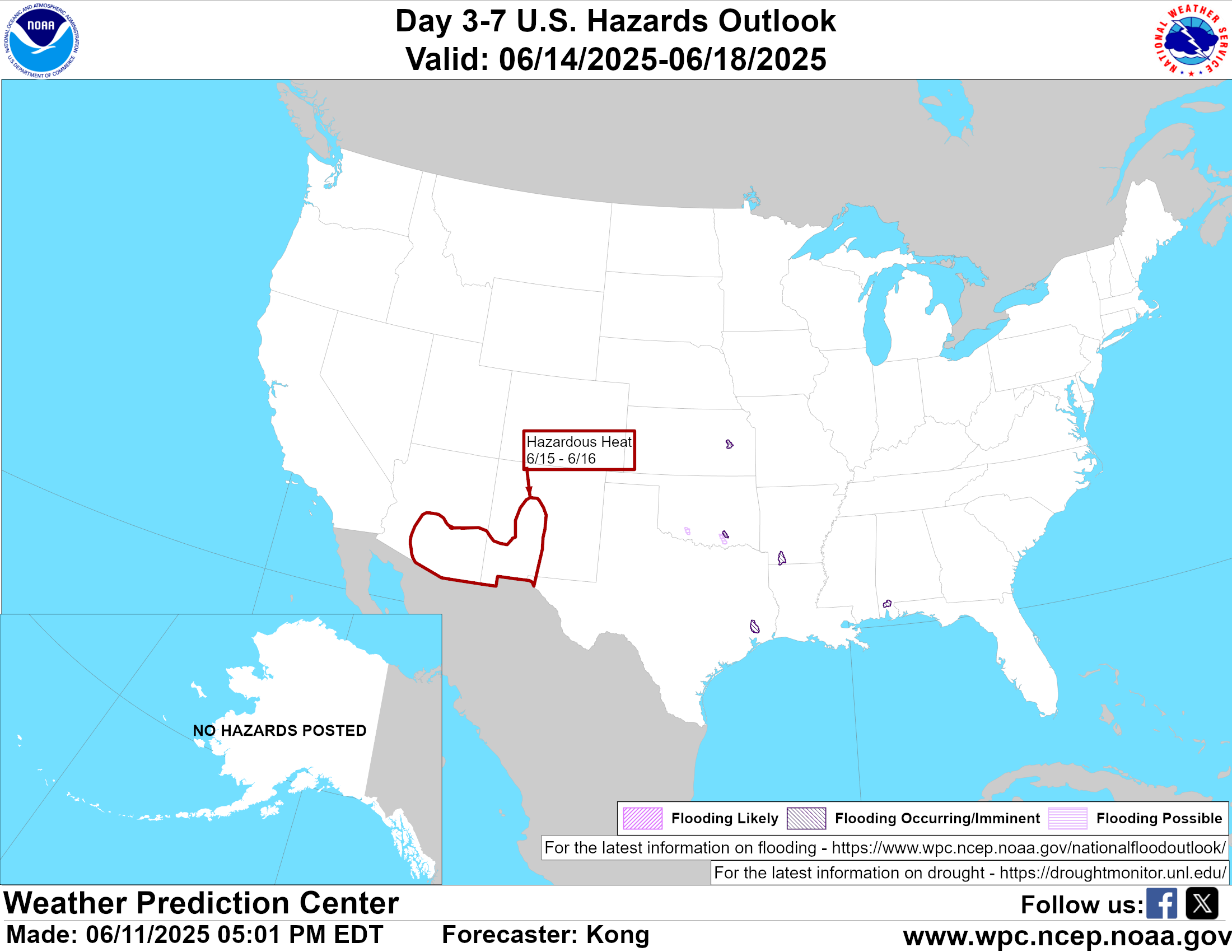
Temperature month to date can be found at https://hprcc.unl.edu/products/maps/acis/MonthTDeptUS.png
Precipitation month to date can be found at https://hprcc.unl.edu/products/maps/acis /MonthPNormUS.png
World Forecast [that website is has been intermittent so be patient]
Below are the Day 1 -3 and 4-6 forecasts for temperature and precipitation. Updates and much additional information can be obtained HERE
World Temperature Anomalies

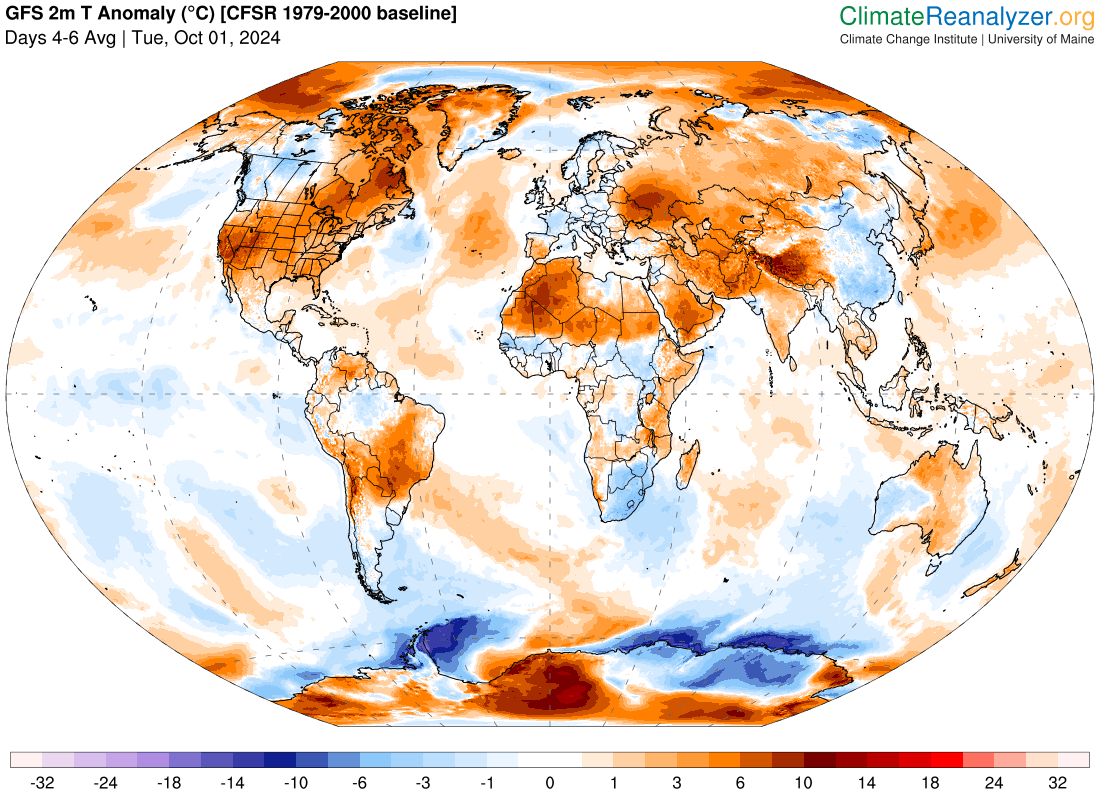
World Accumulated Precipitation
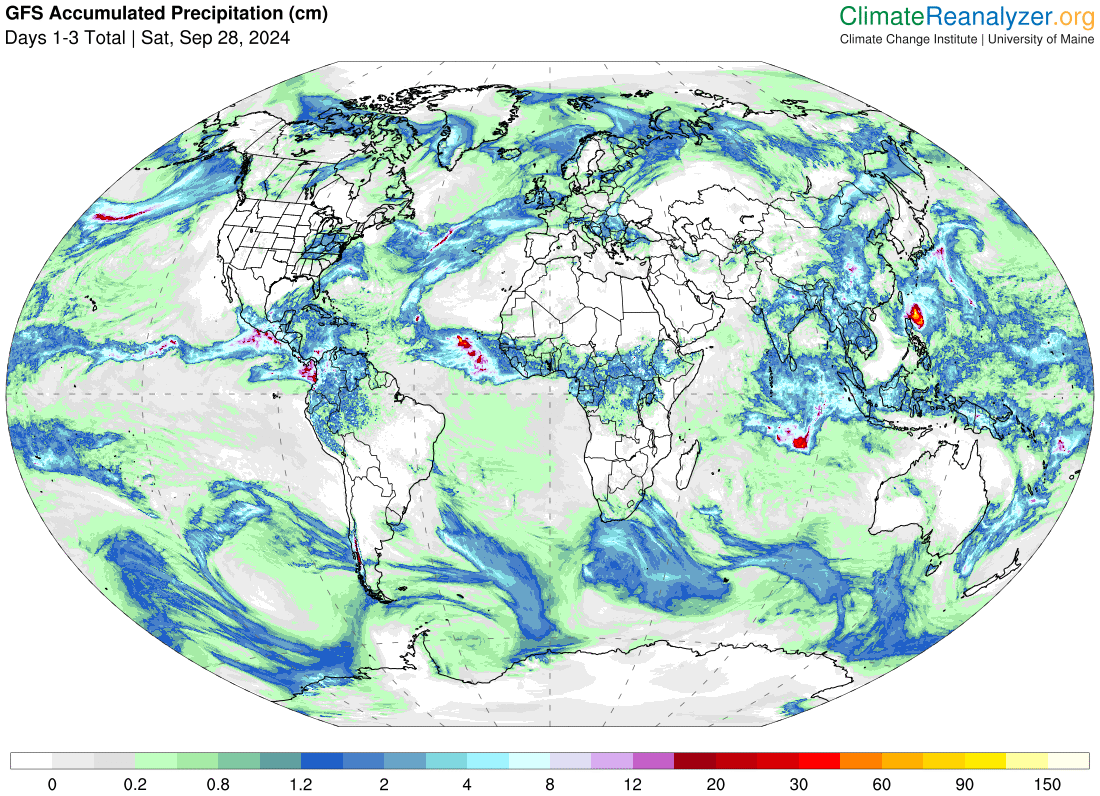

This information is provided by the University of Maine. They draw upon many different sources. There is a lot of information available at the link provided. I have just provided two useful forecasts. There are probably over a hundred different forecasts available from this source.
Worldwide Tropical Forecast (This is a NOAA Product)
This graphic updates on Tuesdays) If it has not been updated, you can get the update by clicking here Readers will only have to do that if they are reading this article much later than the date of it being published.
Information on Tropical Storms can be found HERE. Western Pacific information can be found HERE. Note that unless there is an out-of-season storm the below images will not update until the National Hurricane Center starts their seasonal update of these maps on June 1. I include them simply because there can be an out-of-season event in which case it should show up in these maps.


–
| I hope you found this article interesting and useful. |

